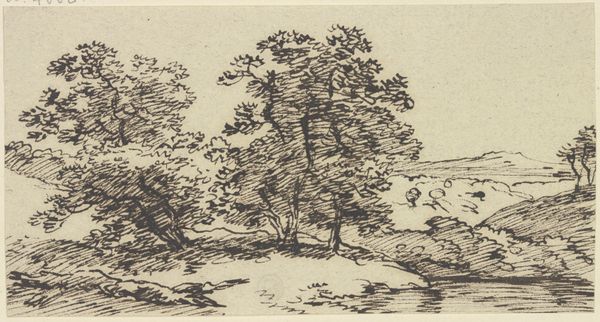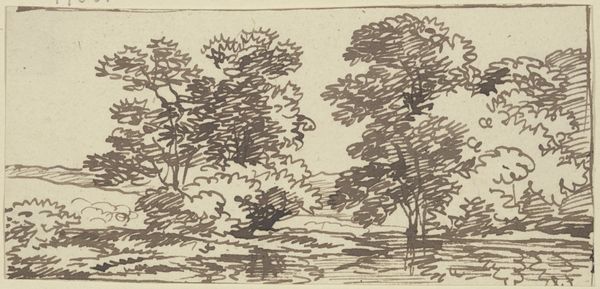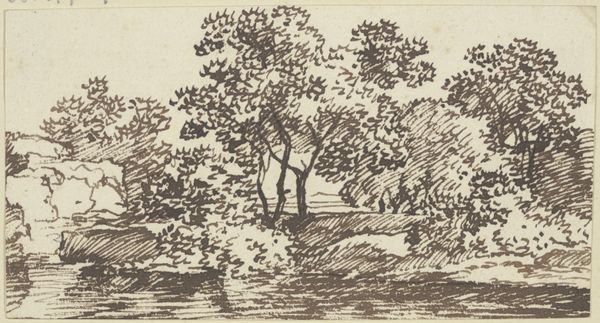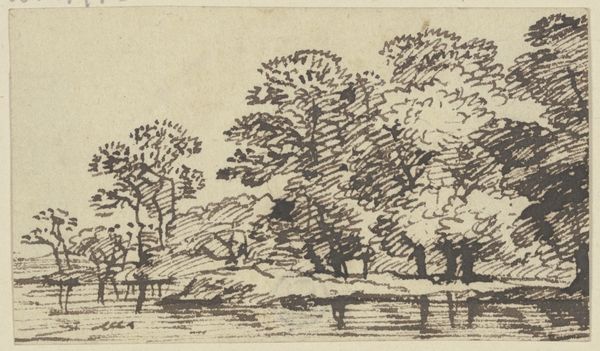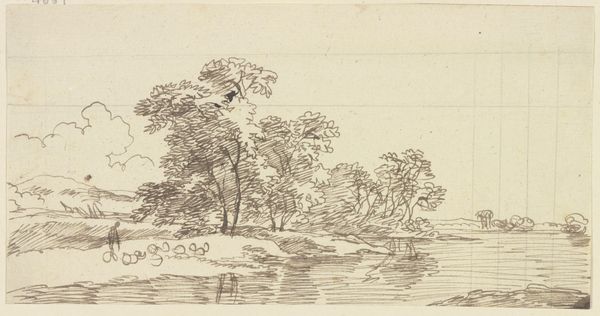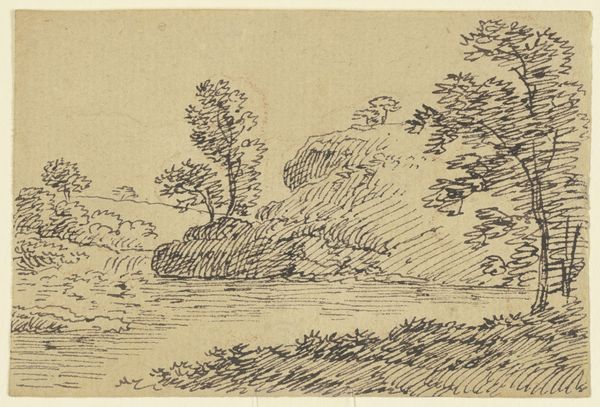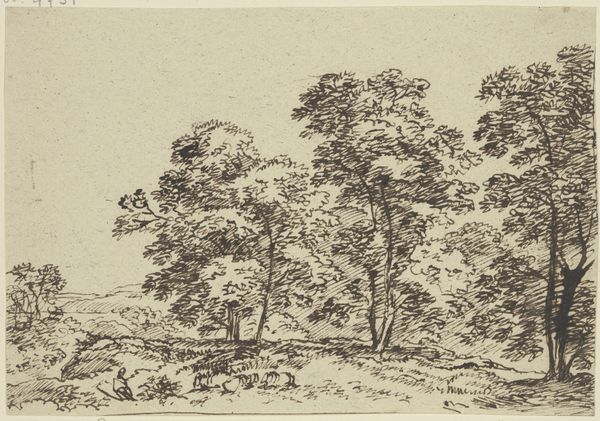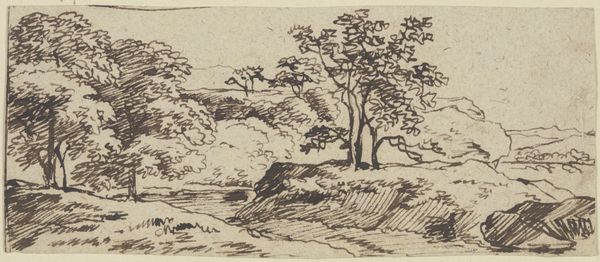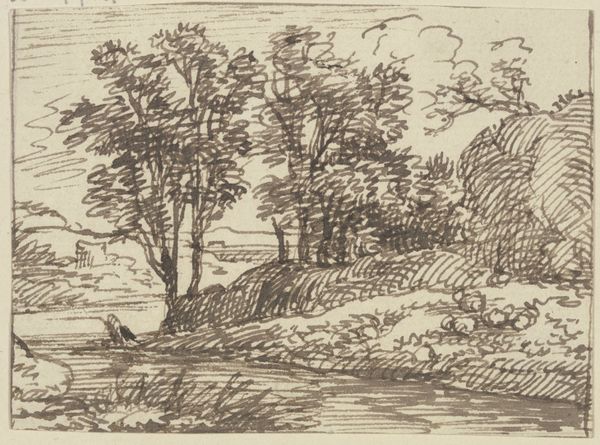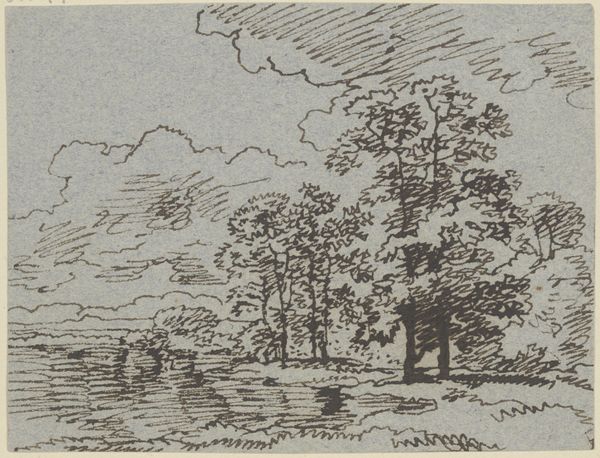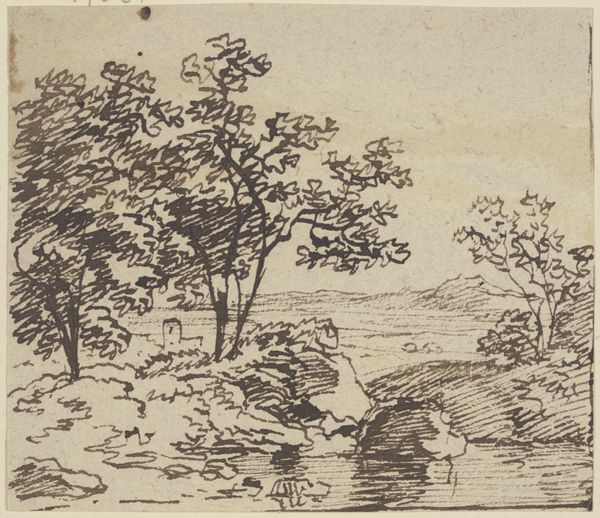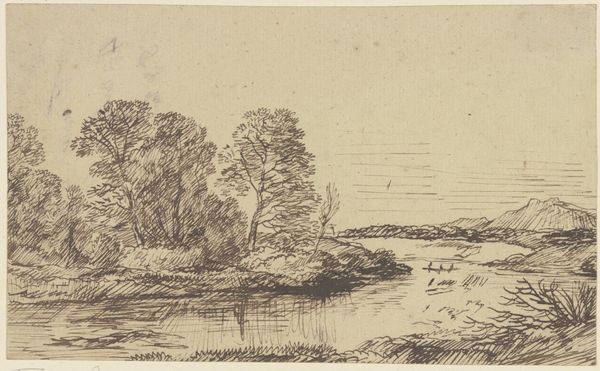
drawing, paper, ink
#
drawing
#
landscape
#
paper
#
ink
#
sketch
#
line
#
realism
Copyright: Public Domain
Editor: Here we have Franz Kobell’s “Landscape with Trees,” an ink drawing on paper, currently residing in the Städel Museum. It has such an unassuming presence, almost a humble quality. I'm struck by the simplicity and quietness it evokes. How do you interpret this work? Curator: I see this landscape as a reflection of its time, steeped in the social and political shifts impacting 18th-century notions of nature and ownership. Consider how landscape art was often commissioned by landowners, subtly reinforcing their dominion. How does this interplay with the Romantic idea of nature as sublime and free resonate with you here, knowing that those idealized depictions often excluded the realities of labor and dispossession for marginalized communities? Editor: I hadn’t considered that. I was mostly focused on the artist’s technique, how the line work creates form. Do you think Kobell intended to make a statement? Curator: Perhaps. Or perhaps he was simply working within the visual language available to him. The "naturalness" of the scene is carefully constructed. Whose gaze are we invited to adopt here? The subtle idealization might serve to naturalize specific power relations, reflecting a particular vision of land ownership and use. It pushes us to confront how nature has historically been represented and controlled. Editor: So, you're suggesting even a seemingly innocuous landscape can reflect societal power structures? That's a pretty compelling idea. Curator: Precisely. Recognizing that art, even depictions of nature, is embedded within larger cultural narratives allows us to understand its potential for both reinforcing and subverting dominant ideologies. It's about asking: Whose land is this, really? Editor: Wow, I never thought of a landscape in that way before. This really expands my understanding of the work!
Comments
No comments
Be the first to comment and join the conversation on the ultimate creative platform.
